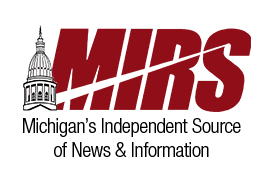(Source: MIRS.news, Published 11/15/2023) Gov. Gretchen Whitmer created tribal liaisons in an executive directive in 2019 and the Michigan Department of Transportation has kept the aligned board abreast of those activities since.
John Shagonaby, tribal consultant and tribal member with the Match-E-Be-Nash-She-Wish Band of Pottawatomi, known as the Gun Lake Tribe, said the tribe started working with MDOT prior to the liaison position being created.
“If you just show up and say we want to partner, we want to respect your authority, we want to say these are our priorities in the project and I think we can find alignment and we did.” Shagonaby said.
The project started in 2017 when the tribe wanted to rebuild a bridge over U.S. Route 131 that led to the Gun Lake Casino near Yankee Springs in Allegan County. The bridge was originally built in the 1950s and was in disrepair. However, the tribe wanted to make sure the bridge was kept open during construction so casino-goers could still have access.
“We also put our money where our mouth is and ponied up $22 million for it. I think it was an historic partnership and I think it went as smooth as it could be. I think everybody’s happy with it,” he said.
The $22 million bridge with tribal casino murals opened in October 2022.
MDOT Tribal Liaison Amy Matisoff told the State Transportation Commission that 16 projects fell under the National Historic Preservation Act of 2022, which made sure historic sites were not disturbed. Overall, 54 local road projects were completed this year. Another seven are set for either the remainder of 2023 or 2024.
“We collaborate and have ongoing relationships with the tribes every day,” she said.
She said one of the future projects was in conjunction with the Nottawaseppi Band of the Pottawatomi for infrastructure improvements related to the Ford BlueOval plant. She said they would end up being done near the FireKeepers Casino in Emmett Charter Township in Calhoun County.
“MDOT administers anything within our own right-of-way. If it is an M route, for example, that is running next to tribal reservation property, we are ultimately responsible for that right-of-way,” she said.
Putting up signs that indicated tribal lands was another project MDOT collaborated with tribes over.
“If you travel around Michigan, you’ll see some of those signs. Signage and representation means a big deal to the tribes,” Shagonaby said.
He said the tribes haven’t always been represented. He said the Match-E-Be-Nash-She-Wish Band of Pottawatomi weren’t recognized until 1999 and before that there wasn’t anything like a liaison.
“I think we’re all learning and doing the best we can as we move forward. So just having a department, say MDOT, having a consultation or knowing who to contact if they dig up a gravesite or something like that. Just having a commitment to do that and having a communication channel set up is awesome,” he said.

